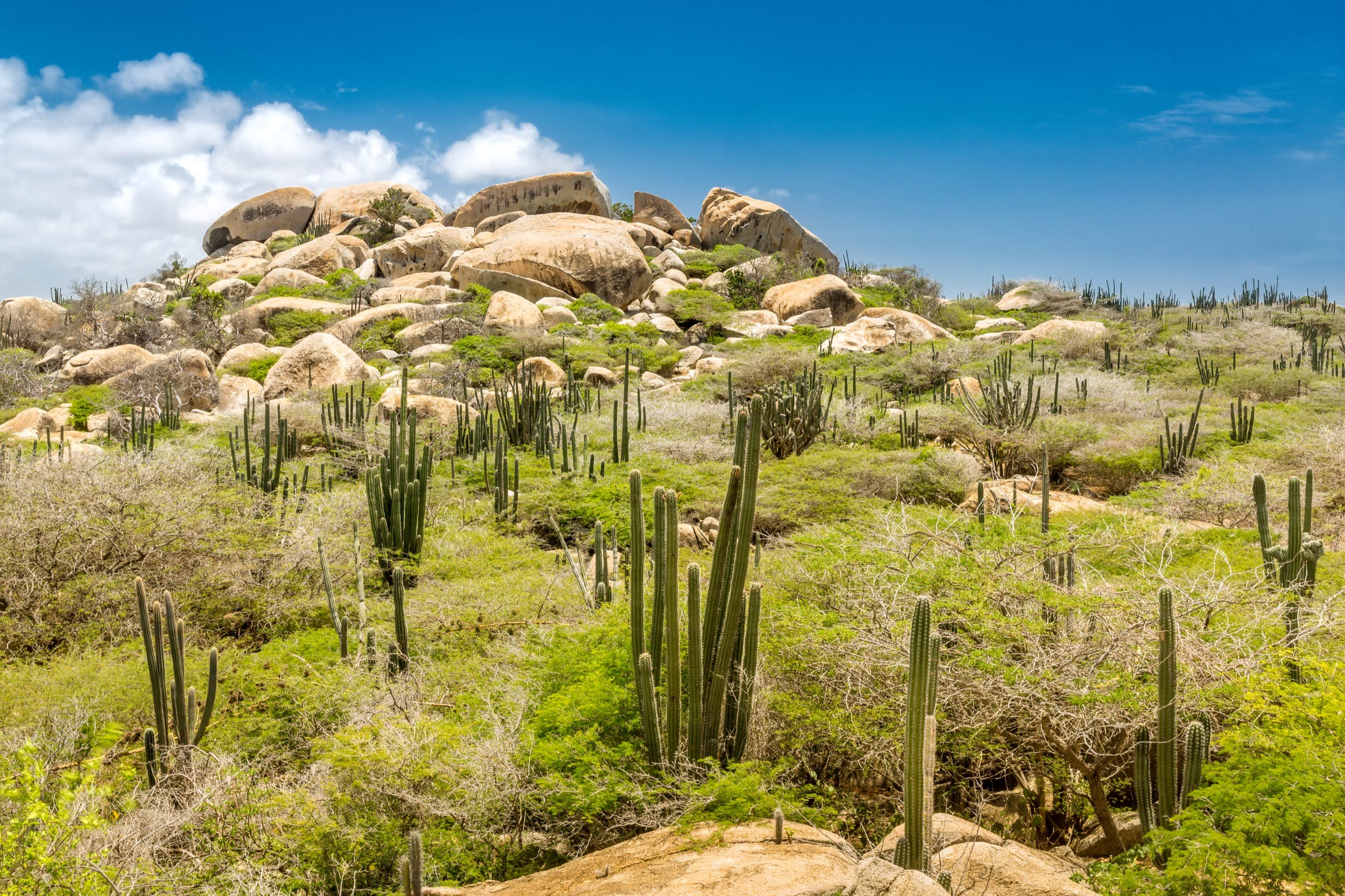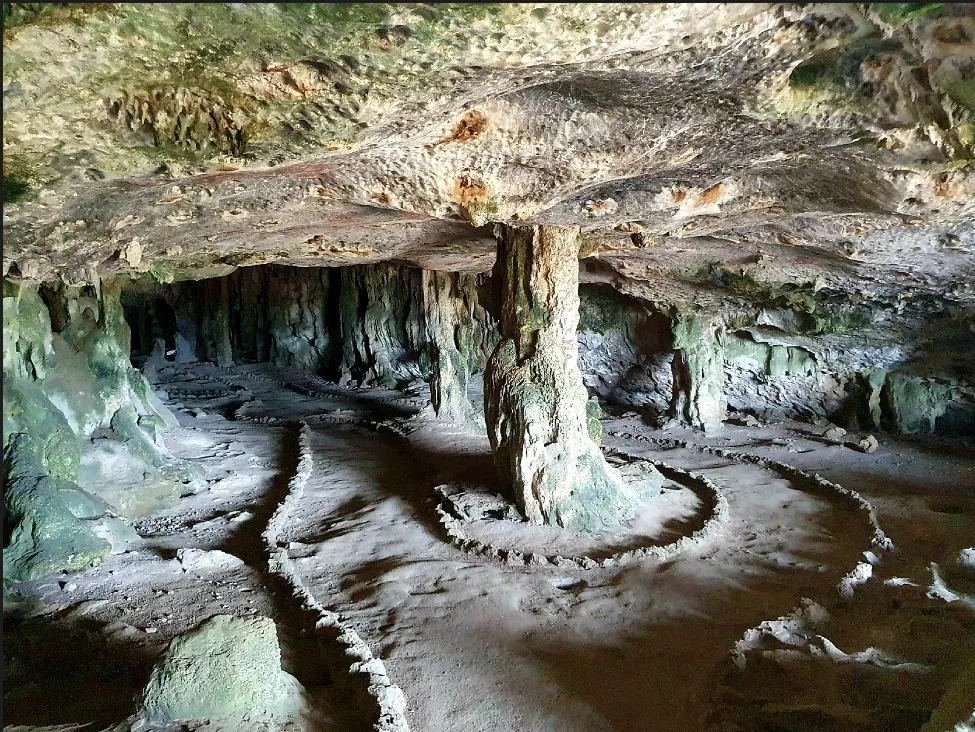Aruba is considered the greenest, most sustainable island in the Caribbean, and it is not just because of the hotel industry, led by the carbon-neutral Bucuti & Tara Beach Resort.
On the island, the protection of nature and the preservation of biodiversity are the highest priority.

The best example is Arikok National Park, which covers 20% of the island and is a protected area.
As the green soul of the island, Aruba is spotlighting the park’s natural wonders and inhabitants worthy of protection for Earth Day on April 22.
Aruba is part of the Dutch Antilles archipelago off the coast of South America and is an ideal destination for sun worshippers, water sports enthusiasts, nature lovers, and culture buffs.
Those who have had their fill of the endless sandy beaches can explore the interior with its flora and fauna or embark on a voyage of discovery into the colonial past.
With outstanding gastronomy, excellent infrastructure, and a wide range of accommodations, the island can satisfy even the highest demands.
A Caribbean flair with Dutch influences creates a unique and safe vacation atmosphere where young and old feel at home.
ARUBA’S OLDEST NATIONAL PARK
Arikok National Park was declared Aruba’s first nature reserve and national park on August 24, 2000.
The 34 square kilometer area in the northeast of the island is biologically extremely complex and is home to the densest concentration of animal and plant species in Aruba.
The most important eco-type is the xeric scrubland.
Candelabra cacti and thorny shrubs dominate the windswept landscape.
The park’s rugged hills are composed mainly of volcanic lava with quartz diorite, batholithic tonalite rocks, and limestone rocks of fossilized coral.
In addition, several sites of cultural and historical value, such as the two limestone caves, Fontein and Quadirikiri.

Fontein Cave contains Native American pictographs that are about 1,000 years old.
The park is managed by the Fundacion Parke Nacional Aruba (FPNA), an independent conservation organization responsible for preserving and managing designated land and marine protected areas on Aruba.
As such, FPNA plays a leading role in protecting the island’s natural and cultural heritage.
ARIKOK’S ANIMAL INHABITANTS
The characteristic desert landscape of Arikok National Park is home to numerous wildlife and endemic species.
For example, the park provides habitat for the Aruba whiptail lizard, the Aruba rattlesnake, the burrowing owl, brown-cheeked parakeets, long-nosed bats, and countless colorful iguanas.
The Burrowing Owl, or Fofoti’s Owl, is certainly one of the animal highlights in the park.
This rare and endangered bird species is found exclusively in Aruba.
It is the smallest owl in the region and got its name because of its distinctive call.
So when visiting the park, it is worth keeping your eyes and ears open.
In addition, Aruba is home to around 250 other bird species – an enormous variety for such a small island.
The bat population in Arikok National Park is also impressive.
Seven different species of bats have been identified on the island, divided into insectivores and fruit-eaters.
Both species are central to maintaining biodiversity on One Happy Island.
This is because certain plants that bloom exclusively at night, such as columnar cacti and aloe, rely on fruit-eaters like bats for pollination and/or seed dispersal.
In turn, insectivorous bats help control the island’s insect population.
Monitoring Aruba’s bat fauna for conservation is part of a long-term FPNA research project gathering important information to formulate sound recommendations to protect the park’s bat fauna better.
Another endemic species is among the dry shrubs and cacti: the Aruba rattlesnake.
The population of the Aruba rattlesnake, known as “Cascabel” on the island, is also continuously monitored by FPNA.
Its population density is very low, so the species requires special protection.
The rattlesnake is also critical to Aruba’s ecosystem and biodiversity.
Part of the monitoring project is to directly address the local population and vacationers to raise awareness of the animal’s relevance and reduce the species’ mortality in the long term.
While exploring the park, visitors can also visit Dos Playa wild beach, the most important nesting site for sea turtles on the island. All four species of sea turtles found on Aruba nest here at once.
Leatherback turtles build their nests and lay their eggs for several nights at this site, which is also home to hawksbill, loggerhead, and green turtles.
The nesting sites are specially protected so the hatchlings can reach the sea without obstacles.
PRESERVATION OF THE LOCAL FLORA
In addition to the wildlife, the flora of the Arikok National Park must also be preserved. FPNA’s Center of Cultivation is the heart of the program to promote biodiversity and climate resilience of the local flora.
The work area includes a seed bank, workshop, nursery, and composting facility.
The seed bank stores seeds of more than 40 native and endangered shrub and tree species in Aruba.
The species to be cultivated were selected for their local rarity and ecological value to species such as the brown-throated parakeet, blue-tailed emerald hummingbird, nectar- and fruit-eating bats, bees, and butterflies.
Arubans and visitors to the island are also involved in the project.
For example, interactive workshops and educational activities are held regularly at the Cultivation Center, and volunteerism is encouraged.
LEAVE NOTHING BUT FOOTPRINTS
In addition to Arikok National Park’s initiatives, visitors can also actively participate in conservation themselves by not leaving the marked trails, not leaving trash in the park, keeping their distance from the animals and not photographing them with a flash, not trampling plants, using reef-safe sunscreen, and not taking natural souvenirs from the park.
Avoiding motorized vehicles and moving around the park on foot is also recommended.
This way, nature’s beauty can be enjoyed even more, exhaust fumes are avoided, and noise pollution is reduced.

